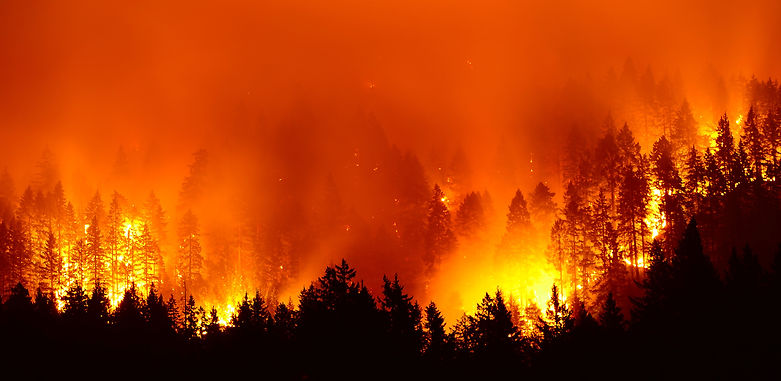Not all wildfires are created equal. Some wildfires burn very hot, killing everything in a forest and necessitating replanting to establish a seed source for trees and plants. These high-intensity fires can devastate ecosystems, making recovery slow and challenging. However, low intensity wildfires (such as prescribed burns) have beneficial effects on forests as they stimulate the nitrogen cycle and increase soil fertility by releasing organic matter and adding nutrients to the soil. They also reduce the buildup of flammable materials, such as dead wood and leaf litter, thereby lowering the risk of catastrophic wildfires. Nutrients released by wildfire return to the soil more quickly than if those same plants had decayed over a long period of time. Fires also eradicate pests and diseases that can harm forests. Prescribed burning is an ancient practice, and for good reason as it restores balance to the ecosystem.

RETURN TO NATURE

A NATURAL PROCESS

Wildfires are a natural part of the landscape, but problematic when exacerbated by drought, pests such as the Spruce Budworm, and decades of human fire suppression. As excess flammable materials accumulate due to these issues, fires burn hotter and longer than they would without these additional disturbances. Drought conditions brought on by climate change also dry out vegetation, making it more flammable. The combination of these factors significantly increases the risks posed by wildfire in northeastern Minnesota. This heightened risk necessitates proactive forest management strategies, such as controlled burns, and planting a diverse mix of tree species in the forest, to better withstand the threat of wildfires.

Wildfires play a crucial role in nutrient cycling, which is the process of returning nutrients to the soil. Fires also aid in controlling pests and support the regeneration of certain species like the jack pine, whose cones require heat to release their seeds. However, human fire suppression practices have led to larger and more destructive wildfires, posing significant threats to forests, homes, and communities. Suppression efforts, while intended to protect property and lives, have interrupted the natural fire regime, allowing flammable materials to build up and creating conditions for more severe fires. Prescribed burns, conducted under controlled conditions by authorities, aim to continue the natural benefits of wildfire, while minimizing risk to human life and property.

RETURN TO NATURE
VARIETY IS KEY !
Plant a variety of tree seedlings on your property, as forest diversity helps create healthy forests that are more likely to withstand challenges such as climate change, pests and wildfires.

EARTH

WIND

FIRE
"Fire is never a gentle master.
Whether for good or ill, its nature is always to burn."
- Lloyd Alexander


